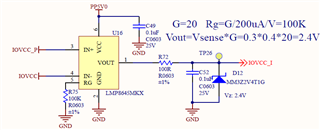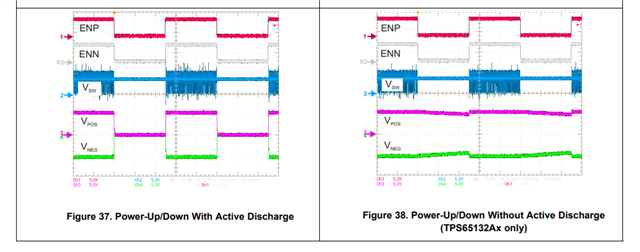Other Parts Discussed in Thread: TPS65132
In our a project , we use LMP8645 to detect the current of DCDC output . The output voltage of DCDC is 1.8V .
LMP8645 is connected after the DCDC output .
Test condition : The input of DCDC is power on , and it's EN is off .
If LMP8645 is removed , the output voltage of DCDC is 0V.
But if LMP8645 is connected , the output voltage of DCDC is about 0.3V.
So we confirm this voltage is caused by LMP8645.
Could you explain why the LMP8654 cause 0.3V voltage ?
Below are the schematic and abnormal waveform :





